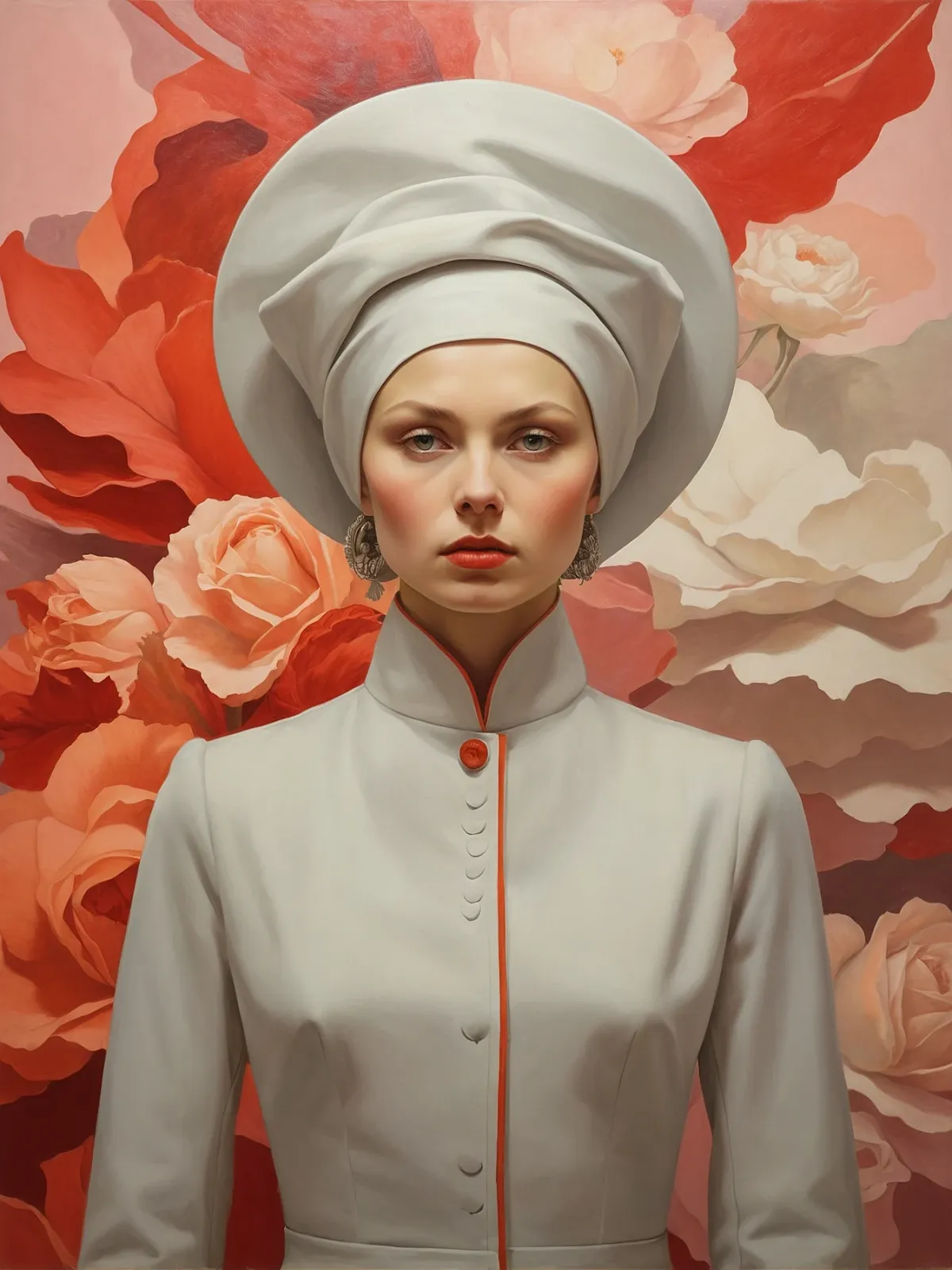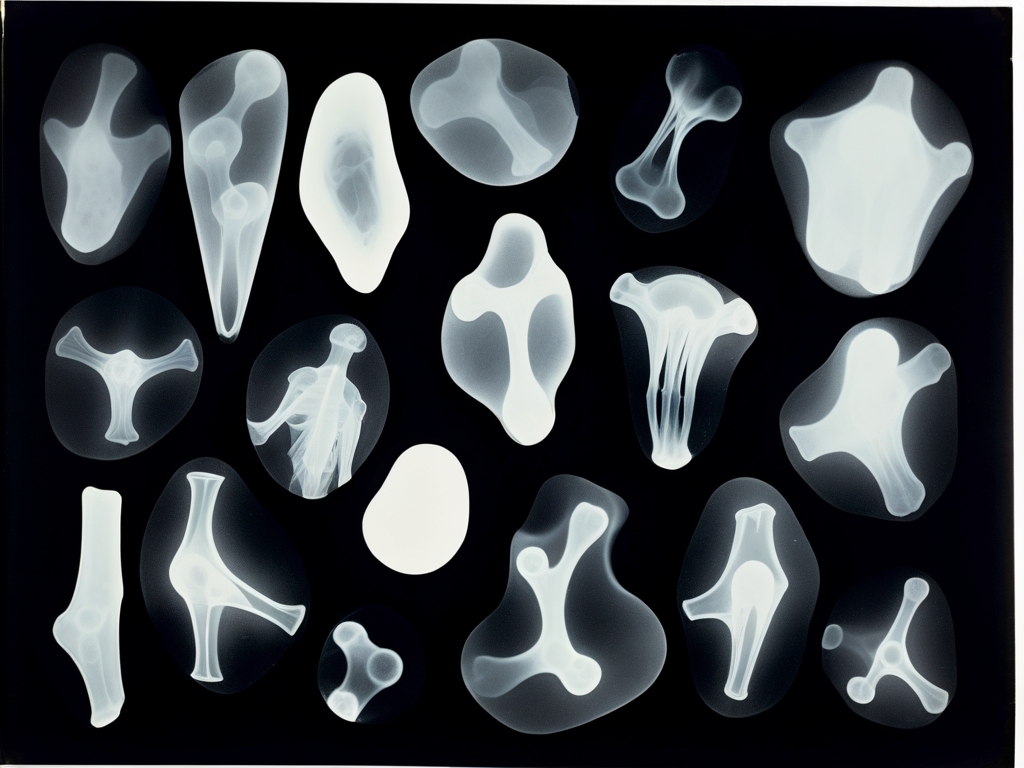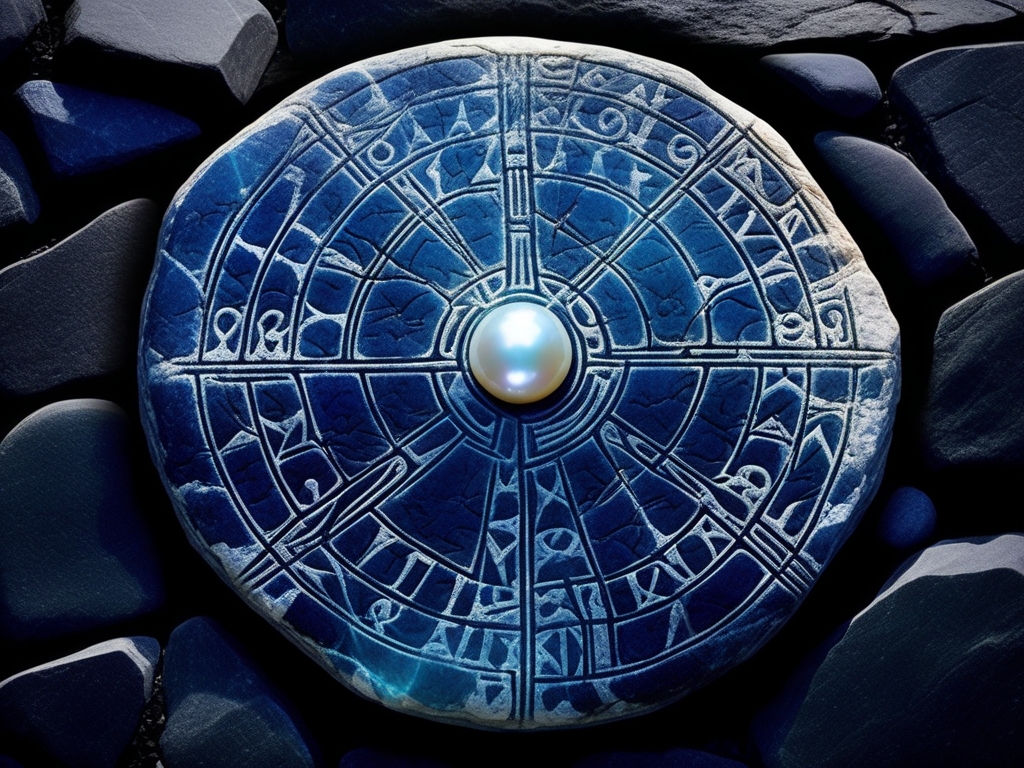The White Lady's Revenge

The Porcelain Duchess stands as Victoria LeStrange's magnum opus, emerging during the twilight of the Victorian era when spiritualism held Europe's elite in its grip. The stark white uniform with coral-red trim creates an unsettling contrast against blood-red roses—a composition pulsing with otherworldly energy.
LeStrange's mastery of light and shadow transforms this seemingly innocent portrait into something cryptic. The subject's alabaster clothing and distinctive headdress resemble the sterile uniforms of London's Bethlem Royal Hospital, while the roses behind her suggest a savage nature beneath a pristine exterior.
"The painting doesn't capture light - it devours it. Stand before it long enough, and you'll notice the roses gradually shifting position, as if breathing." -Dr. Eleanor Blackwood (Paranormal Artifacts Specialist)
The painting's arrival at Ravensfield in 1923 sparked several peculiar incidents. Night staff reported finding rose petals scattered across the gallery floor each morning. Father Michael Thorne, summoned to investigate, discovered these were actually fragments of human flesh. Beneath the frame, he found an inscription: "Perfect in white, forever in sight."
Security logs from Father Thorne's third night documented him speaking to someone in the empty gallery. Surveillance captured him reaching toward the canvas, his fingers breaking its surface like water. The painting began to bleed—not red, but a thick, white substance carrying the scent of roses and formaldehyde.
The next morning, they found Father Thorne seated before the painting, his body drained of color. His skin, hair, and eyes had turned stark white, while his lips matched the duchess's coral-red trim. An autopsy revealed his blood had been replaced with oil paint.
The painting itself had changed—the duchess's expression now bore a subtle, satisfied smile. Crime scene photographs preserved Father Thorne's final message, scratched into the gallery floor: "She collects the imperfect ones."
The Porcelain Duchess continues to draw crowds, though viewers report feeling light-headed after prolonged exposure. Museum policy restricts viewing sessions to five minutes, and no exorcists are permitted on premises. The roses still appear to move, but only when observed from the corner of one's eye—a reminder that some artworks demand more than mere admiration.




